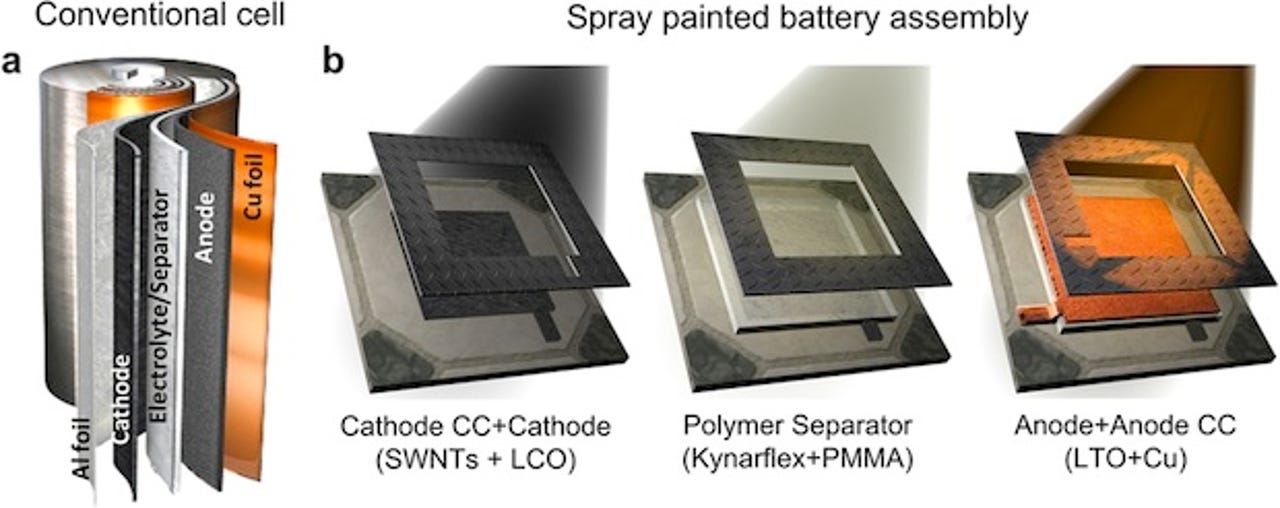Rice University engineers experiment with paintable batteries

Here's today's rhetorical question: why are batteries shaped the way they are, and is it possible for them to take on different more useful forms?
That question is explored in a new paper published by Nature Scientific Reports by Rice University engineers who are experimenting with the idea that rechargeable lithium-ion battery technology might in the future take on different shapes and sizes.
The paper suggests that the traditional "jelly roll" design of batteries is limiting from a design standpoint, which is one reason that its hard to shrink mobile gadgets. These engineers are exploring the idea of painting or printing battery components, a technique that has been applied to circuits and photovoltaics.

The Rice University engineers tested their idea by painting individual battery components into multiple layers. The paints were made from lithium cobalt oxide (positive electrode), lithium titanium oxide (negative electrode) and conductive single-walled nanotubes (current collector). The engineers chose these materials based on their conductive properties as well as their safety.
The drawback to this approach is that lithium-ion technology really needs dry, oxygen-free conditions to operate properly and safely because the stuff that goes into making them is highly flammable and corrosive. The engineers wrote:
"Applying our technique, in its present form, to build Li-ion batteries directly on outdoor objects could be costly due these stringent requirements. Battery components (electrolyte and electrode) that are less sensitive to moisture and oxygen along with development of moisture and oxygen barrier paints would enable assembly of batteries without use of dry rooms, possibly even by non-specialists, enabling widespread renewable energy capture, storage and utilization."
But the idea that rechargeable paint could change the power equation for industrial applications in the future is definitely intriguing.
[via Nature Scientific Reports]
Image courtesy of Nature Scientific Reports